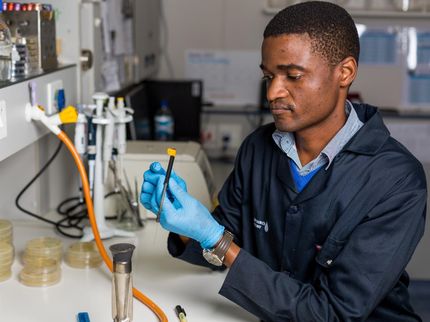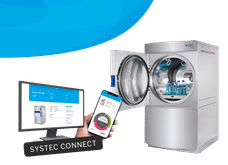Study Finds Ample Opportunities for Life Science Suppliers in the Biodefense Market
Advertisement
Arlington. Biodefense research is one of the fastest growing markets for suppliers of life science products and instrumentation. Government spending on biodefense research is likely to continue to increase at a rate exceeding investment in other areas of biological research and development, and is attracting both scientists and the companies who support them. President Bush's authorization of the Project BioShield Act last week is but one of many government initiatives to improve the country's defenses against bioterrorism. Since the ability to effectively combat bioterrorism largely depends on the information generated by biomedical research on disease-causing microorganisms and the immune system's response to them, nearly $1.6 billion is allocated in 2004 to the National Institutes of Health (NIH). This budget will help support basic research on potential agents of bioterrorism such as anthrax or smallpox as well as the development of vaccines, diagnostic tests and therapies to detect and counter the effects of a bioterrorist attack.
Although biodefense researchers represent a wide range of scientific disciplines that have always been served by the life science industry, their newly increased purchasing power and urgency of their work distinguish them from other customer groups in the market. To help suppliers understand the needs of these customers, BioInformatics, LLC (http://www.gene2drug.com) recently conducted a survey of currently funded biodefense customers as well as those researchers planning to enter the field. The results of this study were released today in the consulting firm's latest report "Market Opportunities in Biodefense Research."
The report reveals that currently funded biodefense researchers are using the products of their existing suppliers, and when necessary, easily adapting them to their applications -- indicating that suppliers should have little difficulty in leveraging their existing product line in this market. In fact, products from well-known companies such as Invitrogen (Nasdaq: IVGN), Sigma- Aldrich (Nasdaq: SIAL), Bio-Rad (Amex: BIO) and Qiagen (Nasdaq: QGENF) are widely used in biodefense laboratories despite the fact that few of their products are specifically designed for biodefense research.
"The widespread recognition and awareness of these brands -- particularly in the cell biology and microbiology communities -- most likely contributed to their high market share. Researchers already in the field are adapting existing products to their biodefense applications which is likely to further reinforce the dominant position of the market's leading companies because customers tend to prefer suppliers and products with which they are familiar over new market entrants," said Bill Kelly, President of BioInformatics, LLC.
The survey results also indicate that biodefense research is rarely the exclusive focus of a scientist's lab. This finding further supports the notion that potential new biodefense buyers can be found across the spectrum of a supplier's existing customer base as researchers are attracted to the field due to the availability of funding and the urgency of the mission. New customers entering the market, however, may be embarking on new directions in their research or employing new techniques or protocols for the first time. As a result, these scientific customers may show a greater propensity to switch suppliers at the start of their biodefense research. In this case, all life science suppliers will be equally vulnerable to defections and/or positioned to attract new customers, thus making it important to firmly establish the applicability of a company's products for biodefense applications.
The convergence of so many scientific disciplines and product categories under the rubric of "biodefense" presents innumerable opportunities to cross vertical and horizontal boundaries and create valuable applications that deliver whole product solutions to end-users. "While suppliers can simply address the biodefense opportunity as an application area within virtually all of the segments they currently serve, alternatively they may choose to define biodefense as a new and distinct market. When viewed as a distinct entity, the biodefense market has no boundaries -- and the results of this study will help companies shape the structure of the market, anticipate the strategies and competitive advantages of various players, and assess the wisdom of various alliances," concluded Kelly.




























































